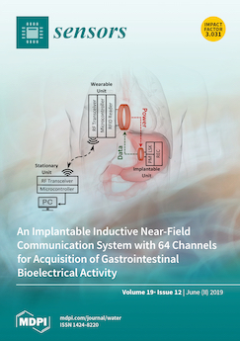Transition-metal nanomaterials are very important to non-enzymatic glucose sensing because of their excellent electrocatalytic ability, good selectivity, the fact that they are not easily interfered with by chloride ion (Cl
−), and low cost. However, the linear detection range needs to be
[...] Read more.
Transition-metal nanomaterials are very important to non-enzymatic glucose sensing because of their excellent electrocatalytic ability, good selectivity, the fact that they are not easily interfered with by chloride ion (Cl
−), and low cost. However, the linear detection range needs to be expanded. In this paper, Cu
2O–bovine serum albumin (BSA) core-shell nanoparticles (NPs) were synthesized for the first time in air at room temperature by a facile and green route. The structure and morphology of Cu
2O–BSA NPs were characterized. The as-prepared Cu
2O–BSA NPs were used to modify the glassy carbon electrode (GCE) in a Nafion matrix. By using cyclic voltammetry (CV), the influence from scanning speed, concentration of NaOH, and load of Cu
2O–BSA NPs for the modified electrodes was probed. Cu
2O–BSA NPs showed direct electrocatalytic activity for the oxidation of glucose in 50 mM NaOH solution at 0.6 V. The chronoamperometry result showed this constructing sensor in the detection of glucose with a lowest detection limit of 0.4 μM, a linear detection range up to 10 mM, a high sensitivity of 1144.81 μAmM
−1cm
−2 and reliable anti-interference property to Cl
−, uric acid (UA), ascorbic acid (AA), and acetaminophen (AP). Cu
2O–BSA NPs are promising nanostructures for the fabrication of non-enzymatic glucose electrochemical sensing devices.
Full article






